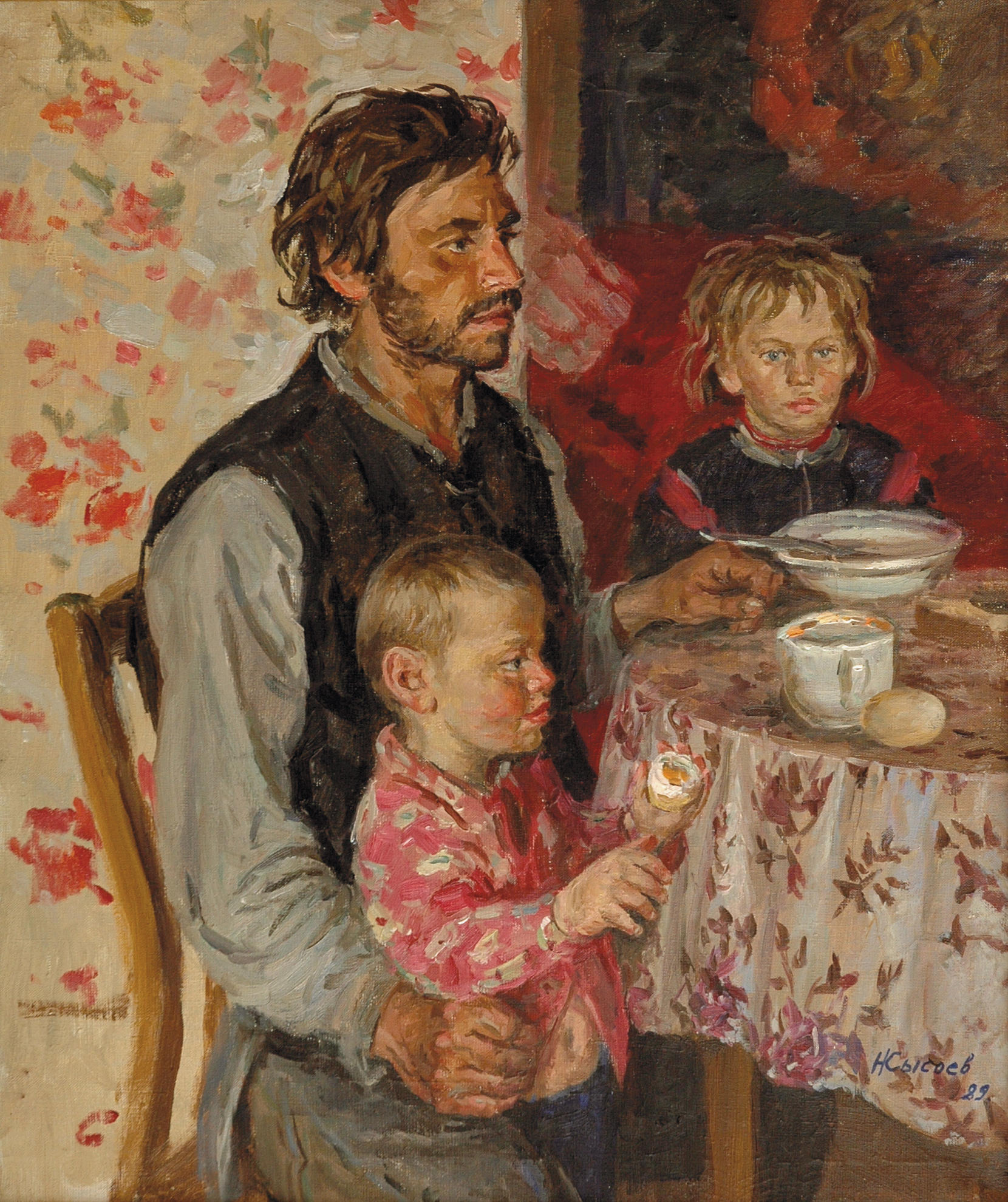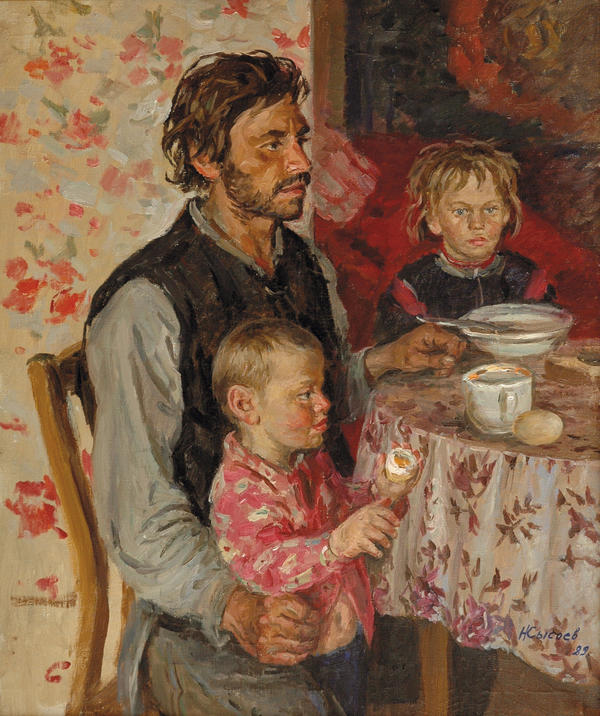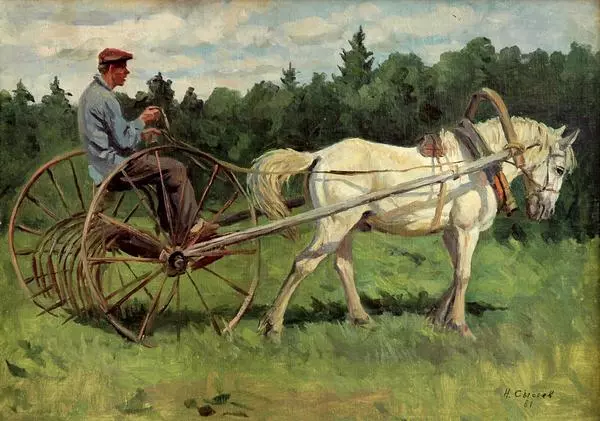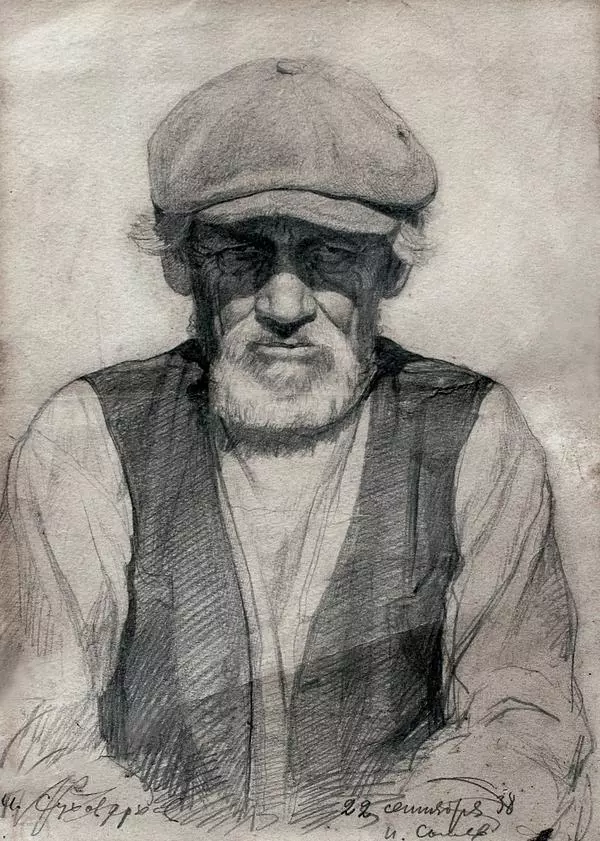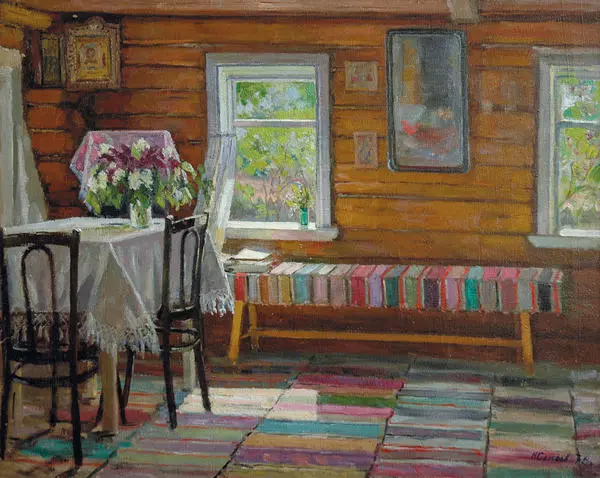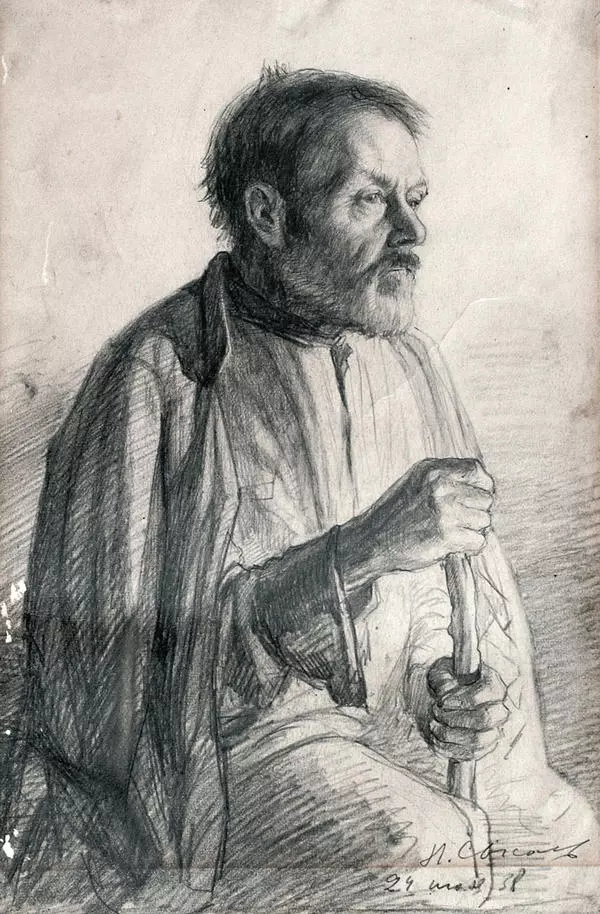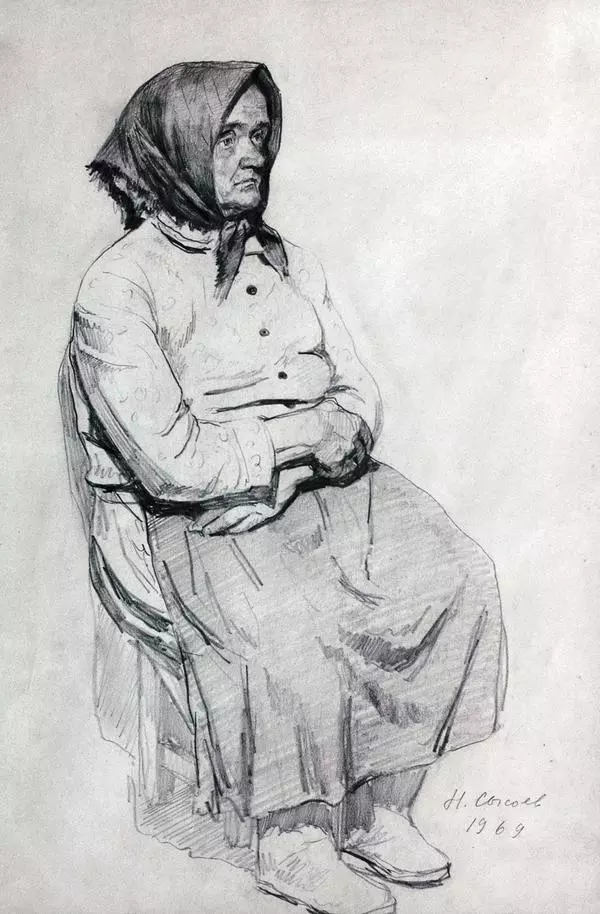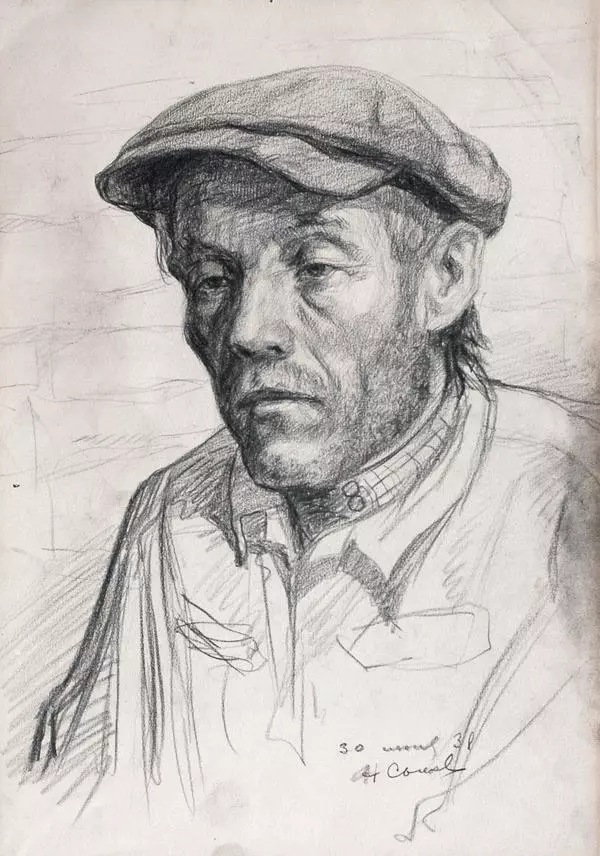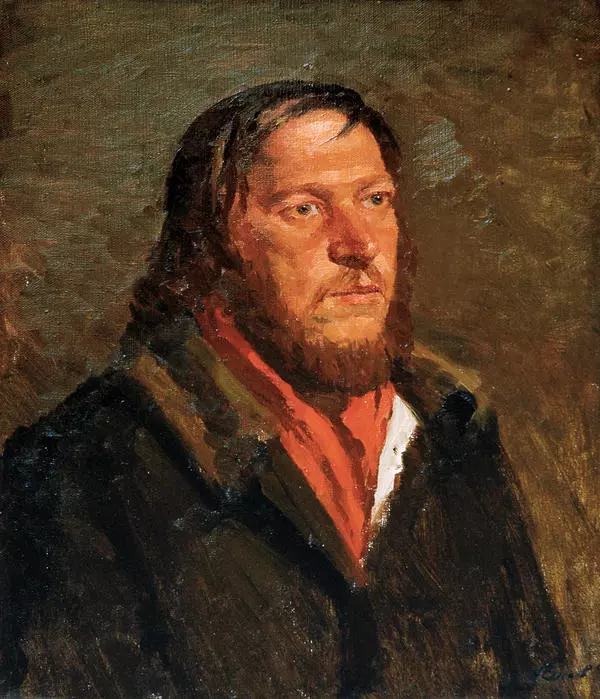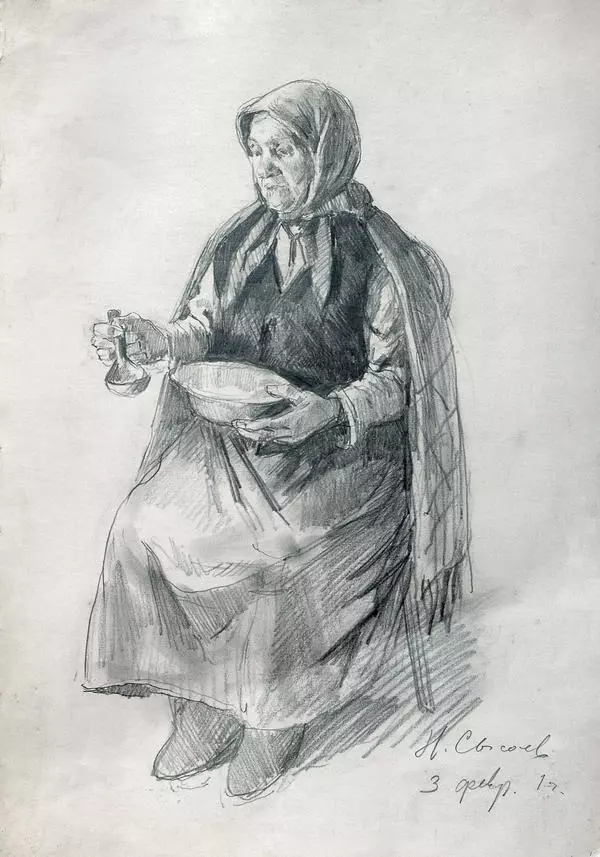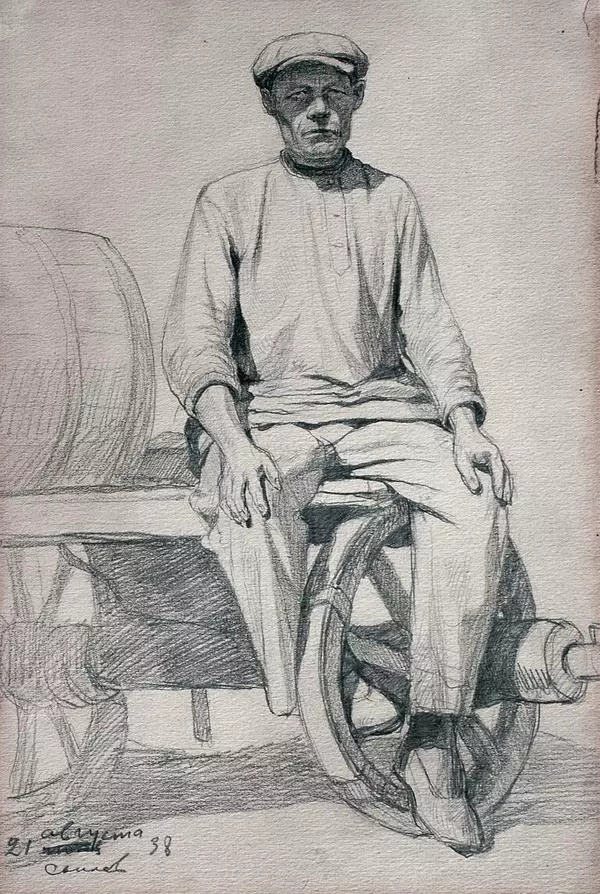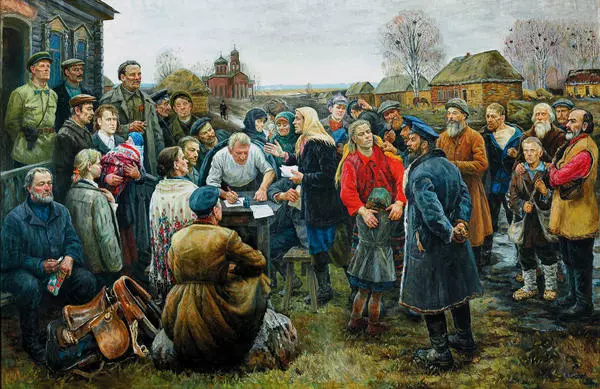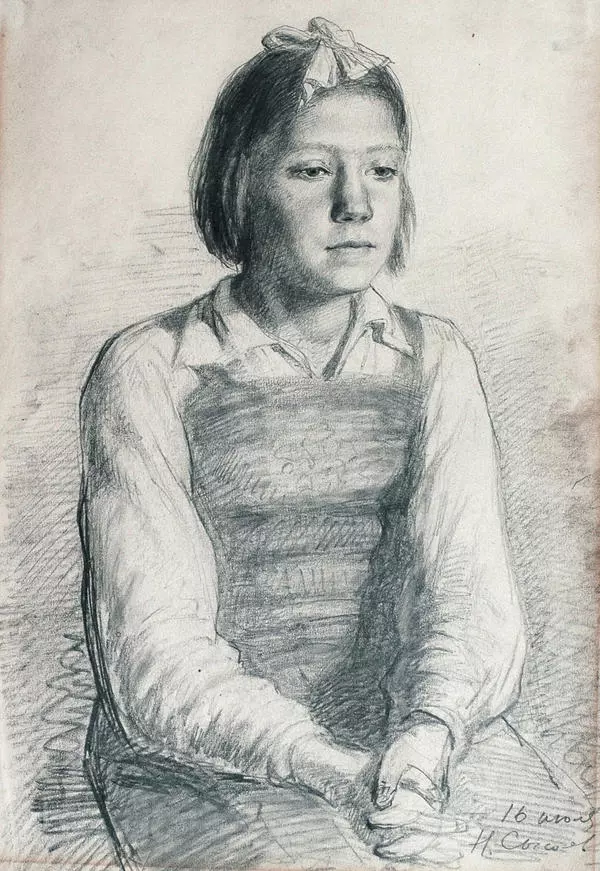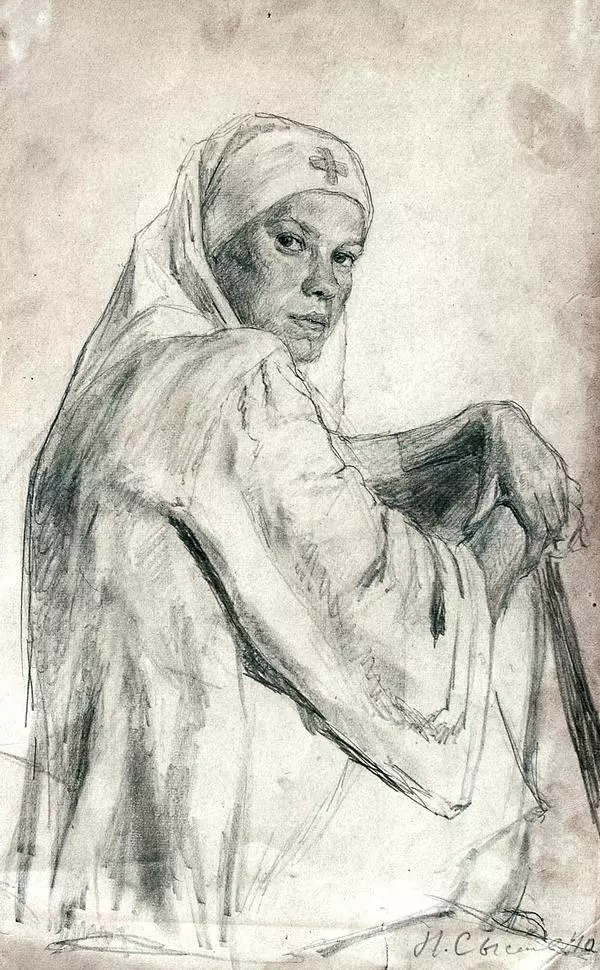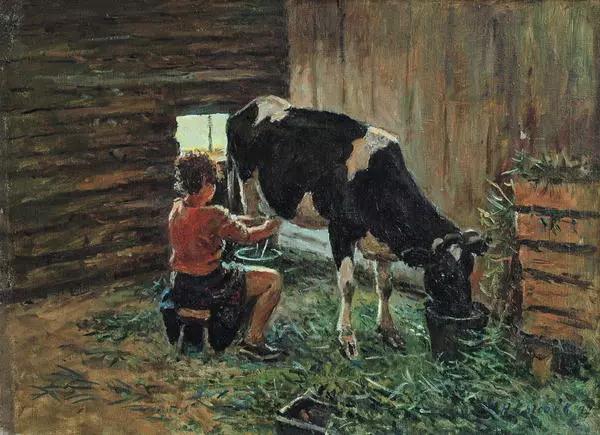Nikolai Sysoev devoted his life to painting. He was interested in different genres, but he became a recognized master of the narrative picture. For this, he mastered all the wealth of forms and means available to painting. In many ways, this trend was determined by the time. The middle and second half of the 20th century passed under the rule of Socialist realism. His primary task was to express great social ideas, to bring feeling into art. This contributed to the popularization of traditional painting genres: portrait, landscape, still life. It was they who turned to the objective, real world. Soviet artists, essentially expressing the desire of all realist painters, spoke of their paramount task thus: “We will depict this day: the life of the Red Army, the life of workers, peasants, revolutionaries, and heroes of labour. We will provide a real picture of events…”
Nikolai Sysoev called himself and his classmates “grandchildren of the works of Repin and Serov.” Like the realist artists of the last century, he desired to clearly reflect the trends of the time and at the same time to combine them with a deep understanding of the inner world of the things depicted. According to Sysoev’s colleagues, he was distinguished by a great love for man. Nikolai Sysoev was born to a peasant family in the village of Slanskoe. His father died during the Civil War. Until the age of 13, the boy lived in a village, which left a mark on his perception of the world: he sincerely loved the simple, artless rural life, the nature of central Russia. Despite the fact that he received his education in Moscow, he often returned to his native village and did not disdain rural labour.
The tractor driver’s family was created as preparatory material or a study for the painting of the same name. The depiction of peaceful, everyday family life of the working class is an important subject of Soviet fine art. In his interview, Sysoev noted that people loved to pose for him, which was not the case for many artists. At first glance, there doesn’t seem to be a contradiction. But for a person in the country, every hour is worth its weight in gold, and to spend that time posing costs dearly. This clearly shows the mutual affection shared by the artist and those being painted. The painting was painted with wide, confident strokes: the people seem to be moulded by the artist’s brush. We see that the owner of the house has a dinner that matches his home in modesty. This is not, however, a cause for drama or emotional pathos. The artist lovingly depicts the simplicity of the life of a country man. The picture is harmonious, the artist skilfully employing colour and combining shades of grey and brown with tones of red and gold.
Nikolai Sysoev called himself and his classmates “grandchildren of the works of Repin and Serov.” Like the realist artists of the last century, he desired to clearly reflect the trends of the time and at the same time to combine them with a deep understanding of the inner world of the things depicted. According to Sysoev’s colleagues, he was distinguished by a great love for man. Nikolai Sysoev was born to a peasant family in the village of Slanskoe. His father died during the Civil War. Until the age of 13, the boy lived in a village, which left a mark on his perception of the world: he sincerely loved the simple, artless rural life, the nature of central Russia. Despite the fact that he received his education in Moscow, he often returned to his native village and did not disdain rural labour.
The tractor driver’s family was created as preparatory material or a study for the painting of the same name. The depiction of peaceful, everyday family life of the working class is an important subject of Soviet fine art. In his interview, Sysoev noted that people loved to pose for him, which was not the case for many artists. At first glance, there doesn’t seem to be a contradiction. But for a person in the country, every hour is worth its weight in gold, and to spend that time posing costs dearly. This clearly shows the mutual affection shared by the artist and those being painted. The painting was painted with wide, confident strokes: the people seem to be moulded by the artist’s brush. We see that the owner of the house has a dinner that matches his home in modesty. This is not, however, a cause for drama or emotional pathos. The artist lovingly depicts the simplicity of the life of a country man. The picture is harmonious, the artist skilfully employing colour and combining shades of grey and brown with tones of red and gold.
